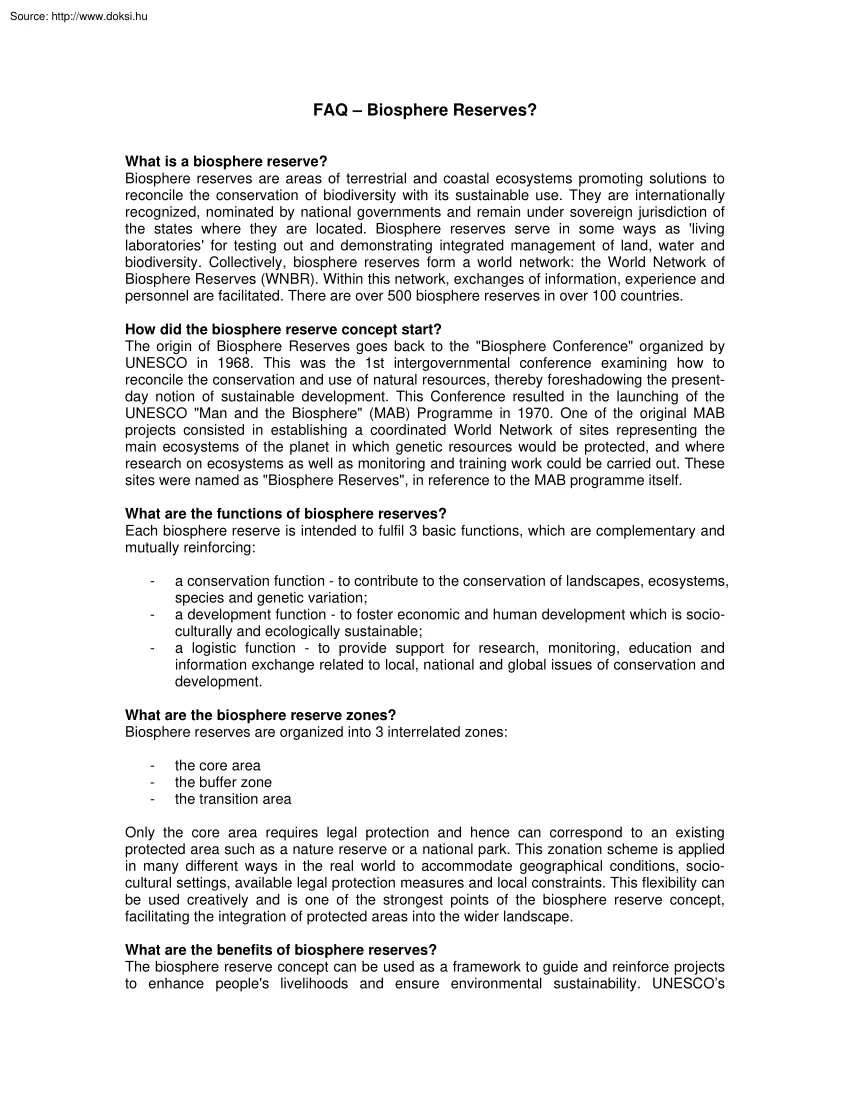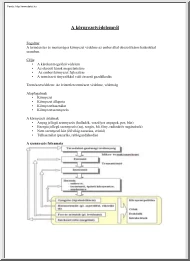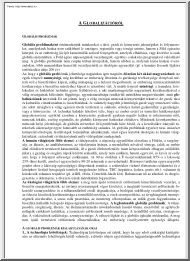Datasheet
Year, pagecount:2013, 3 page(s)
Language:English
Downloads:6
Uploaded:September 25, 2013
Size:20 KB
Institution:
-
Comments:
Attachment:-
Download in PDF:Please log in!
Comments
No comments yet. You can be the first!Most popular documents in this category
Content extract
FAQ – Biosphere Reserves? What is a biosphere reserve? Biosphere reserves are areas of terrestrial and coastal ecosystems promoting solutions to reconcile the conservation of biodiversity with its sustainable use. They are internationally recognized, nominated by national governments and remain under sovereign jurisdiction of the states where they are located. Biosphere reserves serve in some ways as living laboratories for testing out and demonstrating integrated management of land, water and biodiversity. Collectively, biosphere reserves form a world network: the World Network of Biosphere Reserves (WNBR). Within this network, exchanges of information, experience and personnel are facilitated. There are over 500 biosphere reserves in over 100 countries How did the biosphere reserve concept start? The origin of Biosphere Reserves goes back to the "Biosphere Conference" organized by UNESCO in 1968. This was the 1st intergovernmental conference examining how to reconcile the
conservation and use of natural resources, thereby foreshadowing the presentday notion of sustainable development. This Conference resulted in the launching of the UNESCO "Man and the Biosphere" (MAB) Programme in 1970. One of the original MAB projects consisted in establishing a coordinated World Network of sites representing the main ecosystems of the planet in which genetic resources would be protected, and where research on ecosystems as well as monitoring and training work could be carried out. These sites were named as "Biosphere Reserves", in reference to the MAB programme itself. What are the functions of biosphere reserves? Each biosphere reserve is intended to fulfil 3 basic functions, which are complementary and mutually reinforcing: - a conservation function - to contribute to the conservation of landscapes, ecosystems, species and genetic variation; a development function - to foster economic and human development which is socioculturally and
ecologically sustainable; a logistic function - to provide support for research, monitoring, education and information exchange related to local, national and global issues of conservation and development. What are the biosphere reserve zones? Biosphere reserves are organized into 3 interrelated zones: - the core area the buffer zone the transition area Only the core area requires legal protection and hence can correspond to an existing protected area such as a nature reserve or a national park. This zonation scheme is applied in many different ways in the real world to accommodate geographical conditions, sociocultural settings, available legal protection measures and local constraints. This flexibility can be used creatively and is one of the strongest points of the biosphere reserve concept, facilitating the integration of protected areas into the wider landscape. What are the benefits of biosphere reserves? The biosphere reserve concept can be used as a framework to guide and
reinforce projects to enhance peoples livelihoods and ensure environmental sustainability. UNESCO’s recognition can serve to highlight and reward such individual efforts. The designation of a site as a biosphere reserve can raise awareness among local people, citizens and government authorities on environmental and development issues. It can help to attract additional funding from different sources. At the national level, biosphere reserves can serve as pilot sites or ‘learning places’ to explore and demonstrate approaches to conservation and sustainable development, providing lessons which can be applied elsewhere. In addition, they are a concrete means for countries to implement Agenda 21, the Convention on Biological Diversity (for example the Ecosystem Approach), many Millennium Development Goals (for example on environmental sustainability), and the UN Decade of Education for Sustainable Development. In the case of large natural areas which straddle national boundaries,
transboundary biosphere reserves can be established jointly by the countries concerned, testifying to long-term cooperative efforts. Who is in charge? UNESCO does not require any change in law or ownership: each biosphere reserve has its own system of governance to ensure it meets its functions and objectives. The management system of a biosphere reserve needs to be open, evolving and adaptive in order for the local community to better respond to external political, economic and social pressures, which would affect the ecological and cultural values of the area. Hence it is necessary to set up an appropriate governance mechanism, for instance a committee or board, to plan and coordinate all the activities of all the actors concerned, each within their own mandate and competence. Usually a biosphere reserve coordinator is named as the contact person for all matters dealing with the biosphere reserve. Who pays? Everyone. The level of funding depends on the nature and extent of the
projects and activities undertaken. Often, additional funding is not needed: existing budgets can be aligned to meet shared goals. Industry, tour operators, charitable foundations, research funding agencies, governments, local municipalities can all help. Continual support from government - even if only moral and technical - ensures good connections with national policy and international efforts related to sustainable development. UNESCO can provide advice and occasionally seed funds to initiate local efforts; these can help broker projects or to set up durable financial mechanisms. What is the difference between a biosphere reserve and a natural World Heritage site? A biosphere reserve is a representative ecological area with 3 mutually reinforcing functions: conservation, sustainable development and logistic support for scientific research and education. Collectively, all biosphere reserves form a World Network linked by exchanges of experience and knowledge. They are part of a
UNESCO scientific programme, governed by a "soft law", the Statutory Framework. Natural World Heritage sites must be of outstanding universal value in accordance with the UNESCO Convention on the Protection of the World Cultural and Natural Heritage (1972). Efforts to enhance local development and to promote scientific understanding are means to ensure the protection of the natural World Heritage values. In some instances, a core area of a biosphere reserve can meet World Heritage criteria: the usually larger biosphere reserve can therefore serve as a complementary means to protect the integrity of the World Heritage site. Can a biosphere reserve be "de-designated"? The Statutory Framework makes provision for a periodic review every 10 years. The periodic review reports are prepared by the concerned authority, and forwarded to the UNESCO Secretariat. The reports are examined according to a set procedure In the event that a site designated as a biosphere reserve
does not satisfy the criteria, after a reasonable period of time the area will no longer be referred to as a biosphere reserve of the World Network. To date, this procedure has never reached this conclusion: however several counties have voluntarily withdrawn "non-functional" sites and this has been commended by the MAB International Coordination Council. How does UNESCO ensure that biosphere reserves function properly? Biosphere reserves are not the object of a binding international convention or treaty but are governed by a "soft law" -- the Statutory Framework for Biosphere Reserves -- adopted by the UNESCO General Conference and which all countries are committed to apply. In consequence, the UNESCO Secretariat does not have a ‘police function’ and it is the responsibility of each country, through its MAB National Committee or Focal Point, to ensure that the biosphere reserves respond to the criteria and function properly. For this, in most countries it is
not necessary to enact special national legislation for biosphere reserves but rather to use the existing legal frameworks for nature protection and land/water management. This being said, an increasing number of countries are now giving biosphere reserves a special legal status in order to reinforce their application. In the case of a perceived problem, e.g plans to construct an oil refinery within the site, the biosphere reserve status should be used as a platform for dialogue to arrive at an optimal solution. The MAB Secretariat will remind the concerned MAB National Committee/Focal Point of its responsibility in such cases. How do I get involved? Visit the UNESCO MAB Biosphere Reserve Directory to read details on all biosphere reserves, including contact information. Contact also the National MAB Committees and focal points for information on national action on biosphere reserves, including on plans for new biosphere reserves. The UNESCO-MAB Secretariat would be interested to
receive donations of high quality photographs of biosphere reserves for its own publications, for which all photo credits would of course be acknowledged. Contact mab@unesco.org
conservation and use of natural resources, thereby foreshadowing the presentday notion of sustainable development. This Conference resulted in the launching of the UNESCO "Man and the Biosphere" (MAB) Programme in 1970. One of the original MAB projects consisted in establishing a coordinated World Network of sites representing the main ecosystems of the planet in which genetic resources would be protected, and where research on ecosystems as well as monitoring and training work could be carried out. These sites were named as "Biosphere Reserves", in reference to the MAB programme itself. What are the functions of biosphere reserves? Each biosphere reserve is intended to fulfil 3 basic functions, which are complementary and mutually reinforcing: - a conservation function - to contribute to the conservation of landscapes, ecosystems, species and genetic variation; a development function - to foster economic and human development which is socioculturally and
ecologically sustainable; a logistic function - to provide support for research, monitoring, education and information exchange related to local, national and global issues of conservation and development. What are the biosphere reserve zones? Biosphere reserves are organized into 3 interrelated zones: - the core area the buffer zone the transition area Only the core area requires legal protection and hence can correspond to an existing protected area such as a nature reserve or a national park. This zonation scheme is applied in many different ways in the real world to accommodate geographical conditions, sociocultural settings, available legal protection measures and local constraints. This flexibility can be used creatively and is one of the strongest points of the biosphere reserve concept, facilitating the integration of protected areas into the wider landscape. What are the benefits of biosphere reserves? The biosphere reserve concept can be used as a framework to guide and
reinforce projects to enhance peoples livelihoods and ensure environmental sustainability. UNESCO’s recognition can serve to highlight and reward such individual efforts. The designation of a site as a biosphere reserve can raise awareness among local people, citizens and government authorities on environmental and development issues. It can help to attract additional funding from different sources. At the national level, biosphere reserves can serve as pilot sites or ‘learning places’ to explore and demonstrate approaches to conservation and sustainable development, providing lessons which can be applied elsewhere. In addition, they are a concrete means for countries to implement Agenda 21, the Convention on Biological Diversity (for example the Ecosystem Approach), many Millennium Development Goals (for example on environmental sustainability), and the UN Decade of Education for Sustainable Development. In the case of large natural areas which straddle national boundaries,
transboundary biosphere reserves can be established jointly by the countries concerned, testifying to long-term cooperative efforts. Who is in charge? UNESCO does not require any change in law or ownership: each biosphere reserve has its own system of governance to ensure it meets its functions and objectives. The management system of a biosphere reserve needs to be open, evolving and adaptive in order for the local community to better respond to external political, economic and social pressures, which would affect the ecological and cultural values of the area. Hence it is necessary to set up an appropriate governance mechanism, for instance a committee or board, to plan and coordinate all the activities of all the actors concerned, each within their own mandate and competence. Usually a biosphere reserve coordinator is named as the contact person for all matters dealing with the biosphere reserve. Who pays? Everyone. The level of funding depends on the nature and extent of the
projects and activities undertaken. Often, additional funding is not needed: existing budgets can be aligned to meet shared goals. Industry, tour operators, charitable foundations, research funding agencies, governments, local municipalities can all help. Continual support from government - even if only moral and technical - ensures good connections with national policy and international efforts related to sustainable development. UNESCO can provide advice and occasionally seed funds to initiate local efforts; these can help broker projects or to set up durable financial mechanisms. What is the difference between a biosphere reserve and a natural World Heritage site? A biosphere reserve is a representative ecological area with 3 mutually reinforcing functions: conservation, sustainable development and logistic support for scientific research and education. Collectively, all biosphere reserves form a World Network linked by exchanges of experience and knowledge. They are part of a
UNESCO scientific programme, governed by a "soft law", the Statutory Framework. Natural World Heritage sites must be of outstanding universal value in accordance with the UNESCO Convention on the Protection of the World Cultural and Natural Heritage (1972). Efforts to enhance local development and to promote scientific understanding are means to ensure the protection of the natural World Heritage values. In some instances, a core area of a biosphere reserve can meet World Heritage criteria: the usually larger biosphere reserve can therefore serve as a complementary means to protect the integrity of the World Heritage site. Can a biosphere reserve be "de-designated"? The Statutory Framework makes provision for a periodic review every 10 years. The periodic review reports are prepared by the concerned authority, and forwarded to the UNESCO Secretariat. The reports are examined according to a set procedure In the event that a site designated as a biosphere reserve
does not satisfy the criteria, after a reasonable period of time the area will no longer be referred to as a biosphere reserve of the World Network. To date, this procedure has never reached this conclusion: however several counties have voluntarily withdrawn "non-functional" sites and this has been commended by the MAB International Coordination Council. How does UNESCO ensure that biosphere reserves function properly? Biosphere reserves are not the object of a binding international convention or treaty but are governed by a "soft law" -- the Statutory Framework for Biosphere Reserves -- adopted by the UNESCO General Conference and which all countries are committed to apply. In consequence, the UNESCO Secretariat does not have a ‘police function’ and it is the responsibility of each country, through its MAB National Committee or Focal Point, to ensure that the biosphere reserves respond to the criteria and function properly. For this, in most countries it is
not necessary to enact special national legislation for biosphere reserves but rather to use the existing legal frameworks for nature protection and land/water management. This being said, an increasing number of countries are now giving biosphere reserves a special legal status in order to reinforce their application. In the case of a perceived problem, e.g plans to construct an oil refinery within the site, the biosphere reserve status should be used as a platform for dialogue to arrive at an optimal solution. The MAB Secretariat will remind the concerned MAB National Committee/Focal Point of its responsibility in such cases. How do I get involved? Visit the UNESCO MAB Biosphere Reserve Directory to read details on all biosphere reserves, including contact information. Contact also the National MAB Committees and focal points for information on national action on biosphere reserves, including on plans for new biosphere reserves. The UNESCO-MAB Secretariat would be interested to
receive donations of high quality photographs of biosphere reserves for its own publications, for which all photo credits would of course be acknowledged. Contact mab@unesco.org





